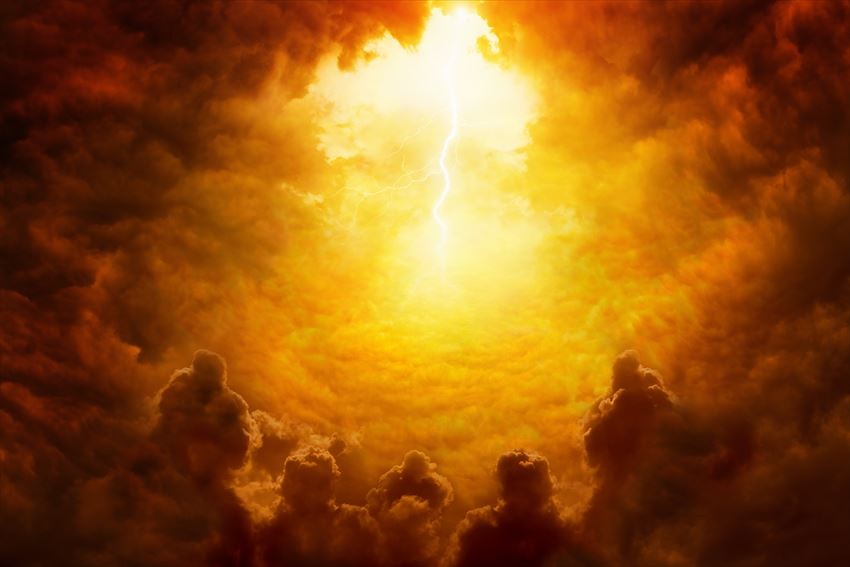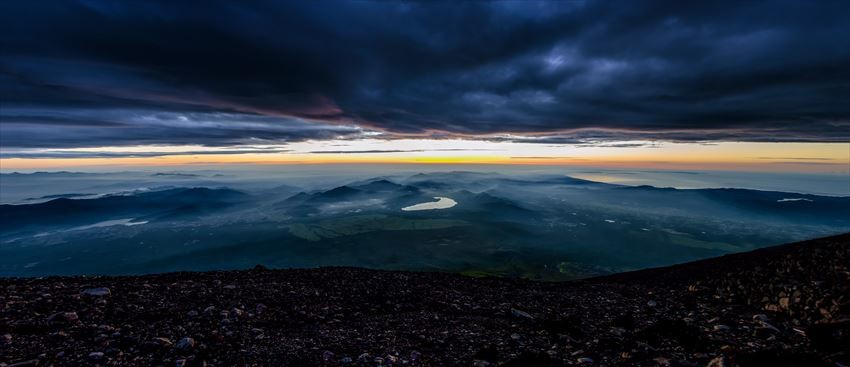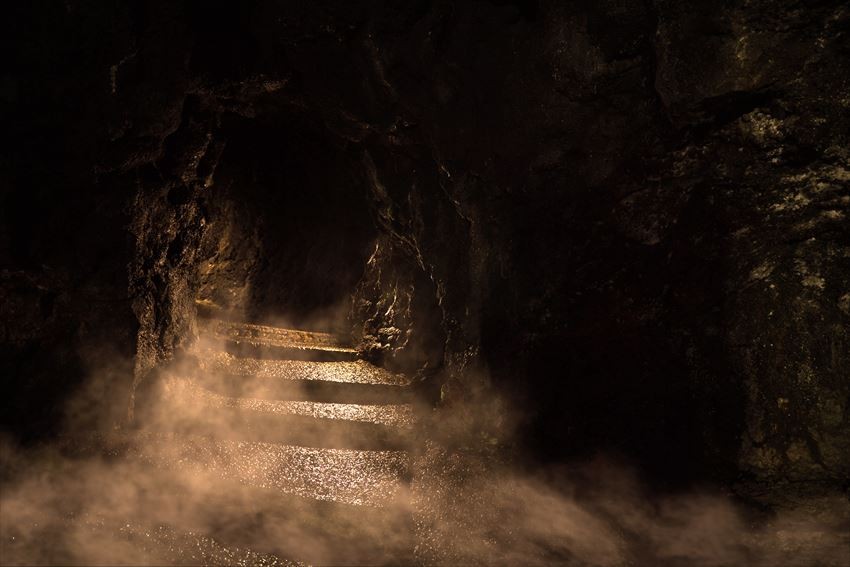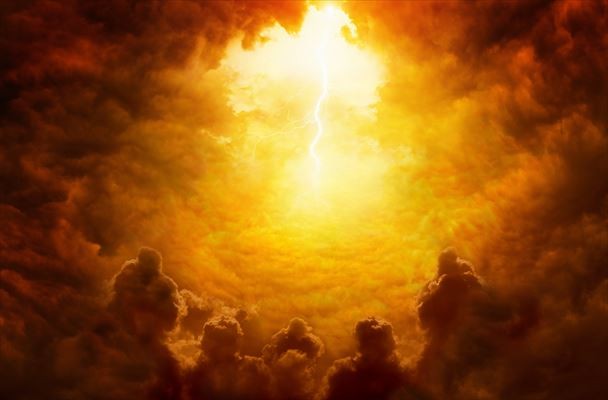
In this installation, we delve into the Japanese Mythology passed down through oral stories and recorded in Kojiki (古事記) and Nihon Shoki (日本書紀) about the creations of Japan as a landmass and the birth of its gods. Did you know that some gods are immortal, but not invincible? Let’s find out right away!
Previous Articles:
Horror Stories to keep you chilled in Summer
Horror & Mystery Series Vol. 1: Japanese Phenomena
Horror & Mystery Series Vol. 2: Obon and Its Origin
Horror & Mystery Series Vol. 3: Strange Occurrences During Obon
Horror & Mystery Series Vol. 4: The Mystery of Aokigahara “The Sea of Trees”
Horror & Mystery Series Vol. 5: The Horror of Aokigahara Episode 1
Horror & Mystery Series Vol. 6: The Horror of Aokigahara Episode 2
The Creation of Heaven in Japanese Mythology

Like many mythologies in different cultures, Japan has one regarding the creation of the universe. The record tells that, from the chaotic raw matter, the lighter particles rose atop the heavier, forming heaven (高天原 Takamagahara "High Heavenly Plain"), then a group of primordial being came into existence.
Those who came into existence alone are referred to as Hitorigami (独神 Lone God, as oppose to 双神 Narabikami, those who came in pair of male-female), and the first group of three are collectively called Zōka sanshin (造化三神).
Two more emerged in Takamagahara from an object which looks like reed-shooting. Like those before them, they appeared suddenly without going through childhood, no defined sex, alone, and disappeared from sight, Together with the previous three, they are known as Kotoamatsukami (別天津神). The Kojiki text did not mention anything about them thereafter, probably due to them being invisible or in separate realm from the rest.
The Seven Divine Generations
While Kojiki mentioned the fives beings known collectively as Kotoamatsukami, Nihon Shoki claimed that the first of the gods are the Kamiyonanayo (神世七代 Seven Divine Generations), which are also mentioned in Kojiki. The first two generations are, much like the first five beings, came into existence without going through childhood, no defined sex, alone (独神), and invisible. Although not mentioned in the texts, it is believed that these being came into existence on the mortal realm, the primordial earth. The two are:
- Kuni-no-toko-tachi-no-kami (国之常立神)
- Toyo-kumo-no-no-kami (豊雲野神)
The following five generations came into existence each as a pair of male and female. The last pair are Izanagi (伊邪那岐神) and Izanami (伊邪那美神). It is believed that Kuni-no-toko-tachi-no-kami summoned them into existence and tasked them to create the Japanese archipelago. Their names are believed to come from Izanau (誘う to invite, to summon) and were given the differentiation suffix by -gi for male and -mi for female. (many gods born from them were given the similar suffix).
The Creation of Japanese Archipelago

To assist in the task, the pair Izanagi and Izanami were given a Naginata named Amenonuboko (天沼矛). The two went to the bridge between Heaven and Earth, and use the halberd to churn the muddy water below, separating the water from the mud, forming an island which is called “Onogoro” (淤能碁呂島 or 磤馭慮島). Together they made a home called Yahirodono (八尋殿) built around a pillar called Amenomihashira (天御柱) there, fell in love, and married. They believed that their union would create the lands.
Firstborns of the Gods
Their marriage and union, performed through the mating ritual in which Izanagi and Izanami would circle around the pillar Amenomihashira in opposite direction and meet, resulted in the birth of two children; Hiruko (蛭子) and Awashima (淡島). Unlike previous gods who came into being without childhood, the two were born as infants, but malformed and were not considered as gods, since the ritual was meant to create lands, not children.
Hiruko was said to have neither bone nor leg, which is why he was named Leech-child (literal translation of 蛭子). Both were put on the cradles and was sent away into the sea. It is believed that Hiruko later overcame his difficulty and became the god of fortune Ebisu; the only Japanese God in the Seven Gods of Fortune (七福神 Shichifukushin).
The Birth of the Lands
To their dismay, Izanagi and Izanami consulted the other gods in Takamagahara, asking for the answer to the cause of their misfortune. After listening to their tales, the other gods concluded that it was because Izanami spoke first when they met while circling the pillar in their ritual. When they performed the ritual correctly, instead of a child, the lands were formed, thus born the Eight Great Islands (大八洲 Ōyashima). The first of them was believed to be Awajishima (淡路島) in Hyogo Prefecture, and the last of the eight Yamato (later known as Honshu).
The Birth of the Gods
After the lands were created, Izanagi and Izanami decided to give birth to other deities. Like other gods before them, all came into existence in their adulthood rather than as infants. Some did not have defined sex, much like the Hitorigami. Upon the 17th deity Izanami bore, Hi-no-Kagutsuchi (火之迦具土神) was born with flame, causing mortal wound to Izanami. In her dying agony, many parts of Izanami sprung into six more gods. In his weeping grief, Izanagi’s tears spring into another god.
After burying his love at Mount Hiba (比婆山), his sadness turned into anger and he slew Kagutsuchi. From the blood of Kagutsuchi sprung eight gods, and from his corpse another set of eight. Some texts said the eight parts of the body became eight volcanoes. The birth of Kagutsuchi marked the end of the creation of lands and the beginning of the circle of life and death.
Descent into the Land of Yomi

Izanagi then decided to bring his wife back, but that meant he had to make a journey to the realm below, not only the heaven, but also below the mortal world; Yomi-no-kuni (黄泉の国). The land made of particles heavier than the light that made the Takamagahara, heavier than the matter that formed the mortal world. The land of the dead.
In our next installation, we will follow Izanagi to the underworld, not literally though, but through his tales. What darkness befell him, what curse did it bring to the land… wait and find out next week!

Comments